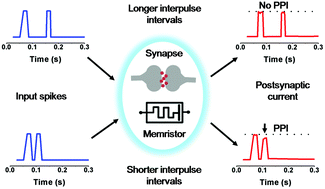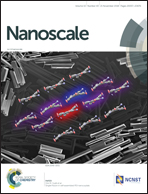Sensory gating in bilayer amorphous carbon memristors†
Abstract
Multi-state amorphous carbon-based memory devices have been developed that exhibit both bipolar and unipolar resistive switching behaviour. These modes of operation were implemented independently to access multiple resistance states, enabling higher memory density than conventional binary non-volatile memory technologies. The switching characteristics have been further utilised to study synaptic computational functions that could be implemented in artificial neural networks. Notably, paired-pulse inhibition (PPI) is observed at bio-realistic timescales (<100 ms). Devices displaying this rich synaptic behaviour could function as robust stand-alone synapse-inspired memory or be applied as filters for specialised neuromorphic circuits and sensors.



 Please wait while we load your content...
Please wait while we load your content...